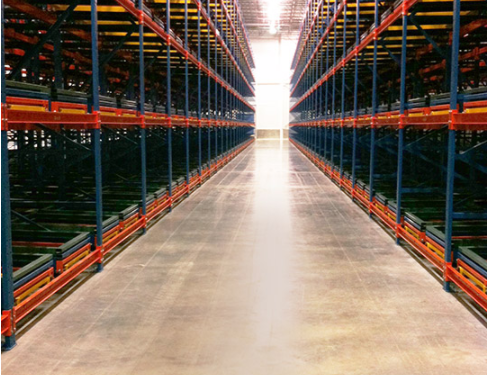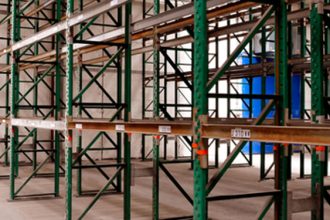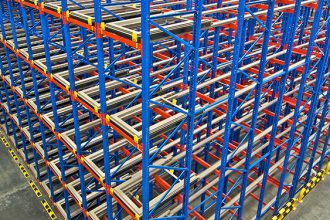Static Vs. Pushback: Understanding which type of racking is right for your operations.

It’s time to outfit a new, greenfield distribution center, or add/upgrade your existing brownfield facility. Key to the success is your racking, which means you have some factoring and decision making ahead. One of the most important decisions is which type—or combination thereof.
Two of your main choices are selective, better known as static racking, or pushback. Each has its pros and cons and place within a distribution center. Understanding those factors and your individual needs and budget will help you work with a racking provider to make the best decisions for today and the future.
First, a primer on what each of the two racking types is and what they can provide. Selective racking is your traditional “frames and beams” steel racking. They come in a variety of sizes, configurations and durability. Some may come in modular systems, which allow you to mix and match for a variety of applications. They are durable, long-lasting, and meant to withstand seismic activity and/or forklift impact. Selective is the backbone of any distribution center and will generally last for years without incident.
Pushback racking, on the other hand, is a high-density option that allows you to store pallets several deep, while also allowing for easy accessibility. A big advantage to pushback is the floor space that it buys you—without as much need for forklift access between rows as with static racking, you are able to better utilize your cube.
An example: With selective racks, you might need eight forklift aisles of up to 12 feet in width. With pushback, you might reduce that to three aisles so more floor space is used for storing product. Pushback operates in a first in/last out system, so it may not be a good solution for extremely time-sensitive materials, such as pharmaceuticals or foods with expiration dates. However, if you configure your pushback to just two rows deep, you can find the happy medium for that scenario.
The biggest drawback to pushback racks can be cost—static racking is the more affordable option. However, a data analysis can help you determine your return on investment (ROI)—the more you are using pushback, the faster you can achieve an ROI. Additionally, in a new build, you can get by with less square footage with pushback, saving on overall building costs.
One way to test the waters with pushback is to start small. Like a set of Legos, you can always add to pushback if it proves efficient for your operations. So start with 10 bays of racking, for example, and give it a six-month trial. If you realize savings, add another 10 bays when your budget opens up again, and so on.
Most industries, and even ecommerce, can be suitable to pushback racking. Selective racking isn’t going away, any time soon, and most facilities with pushback will still have the traditional racking in various parts of operations. Given the potential gains from pushback, however, it’s worth a look at upgrading to pushback for some or all of your operations, as well.


